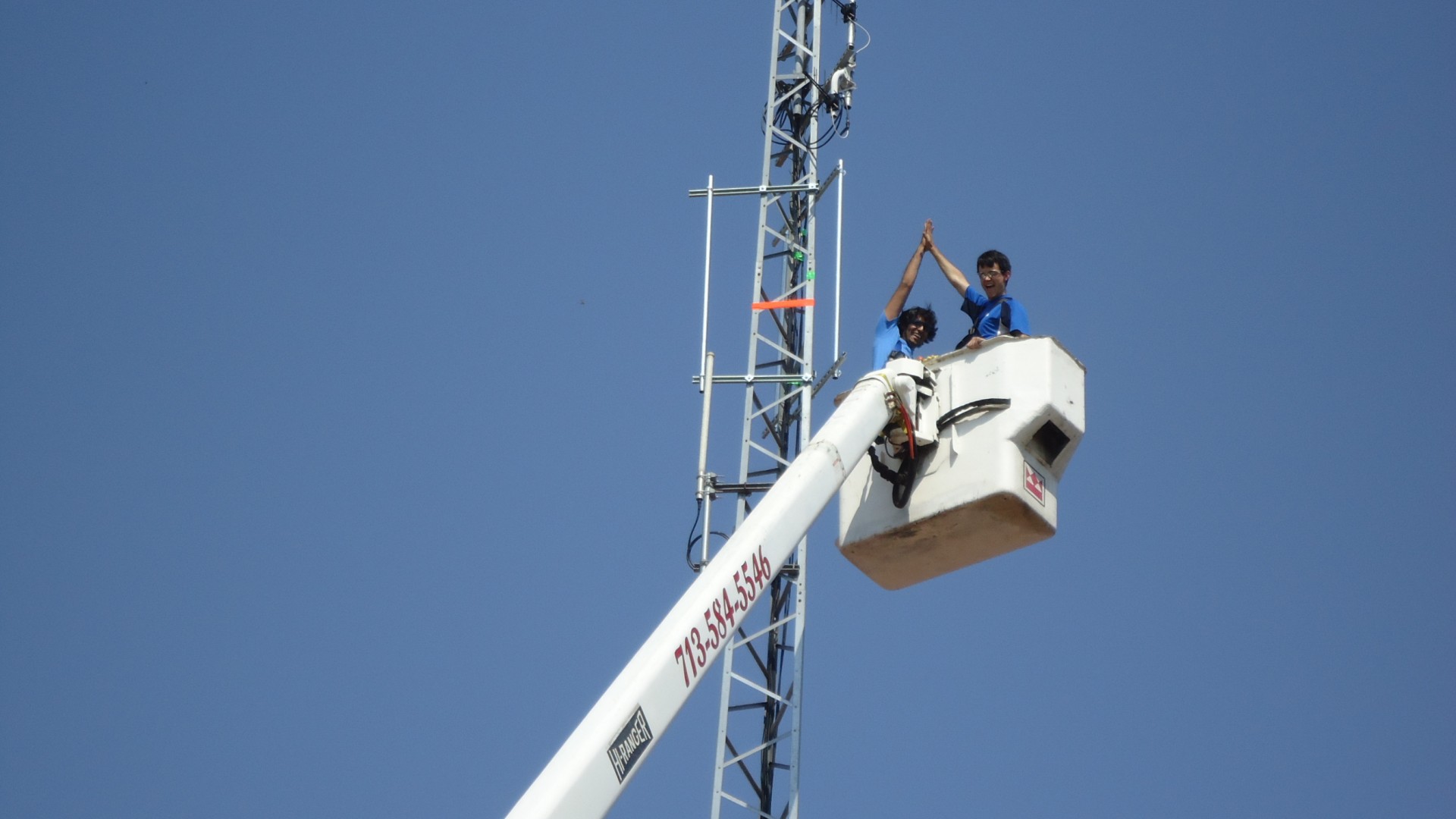The Technology For All Wireless project advances technology to address the unique needs of underserved communities and developing regions by developing:
-
New wireless network architectures, systems, and algorithms that enable high-performance ultra-low cost wireless access (link)
-
Health sensing applications that exploit low cost sensing and communication in order to address care of chronic diseases (link)
-
Mobile computing platforms that address the usability needs of underserved communities (link)
- Real-time environmental sensing for extreme events to empower community members with actionable high resolution information on hazards (link)
“The TFA project is demonstrating innovative diverse spectrum wireless designs, and is showcasing new applications from environmental monitoring to health sensing.” —Edward Knightly |
History and the road ahead.
By the turn of the century, high speed and ubiquitous Internet access had rapidly transformed from a luxury to a necessity: those without access found themselves increasingly locked out of opportunity. Beginning in 2003, Rice teamed up with Technology For All (TFA), a non-profit organization that provides technology resources and training to under-served populations. Meeting with TFA and community leaders, it was clear that connectivity was the key to open doors to educational and work opportunities.
In 2005, we announced with Houston Mayor Bill White and Rice President David Leebron that we had blanketed one of Houston’s most economically disadvantaged neighborhood with Wi-Fi. Because commercial Wi-Fi had previously targeted indoor networks, we designed a custom programmable software defined wireless network from the ground up. We were the first to deploy a three-tier multi-hop Wi-Fi network and showed how an all Wi-Fi solution can cost effectively integrate an access network, connecting users to access points, a multi-hop backhaul network, wirelessly relaying traffic among access points until it reaches a fiber connection, and long-distance Wi-Fi links to provide capacity injection to remote points. This architecture provided broadband access at such an unprecedented low cost that SBC (now AT&T) sponsored legislation to stop our project (see front page of Houston Chronicle, March 3, 2005).
Amidst a spectrum controversy over how best to use UHF bands, or the “beach front property” of spectrum, we set out to demonstrate the capability of Wi-Fi in UHF bands. By 2011, we had deployed the world’s first residential UHF Wi-Fi network at TFA. With custom hardware and software, we showed how “super Wi-Fi” can retain the low cost and simplicity of 2.4/5 GHz bands, while achieving unprecedented range and penetration that is only available below 1 GHz. Highlighting the controversy, when the story broke in the tech press (e.g., see The Atlantic article) the FCC commissioner of the spectrum enforcement division called to ask if we had a license to operate the network in the UHF bands. We did! (call sign WF2XPU). More recently, we designed the award winning system WATCH, which enables a campus to repurpose spectrum for super Wi-Fi, even if the TV transmitters are actively broadcasting.
Since its inception, the TFA network has served thousands of users while simultaneously demonstrating research advances in the field. In 2016 when the White House announced a $400 million investment in wireless research, it featured a video of the TFA project as a template of community impact for wireless research. What next? Stay tuned for Tb/sec wireless and high-resolution real-time environmental sensing!
